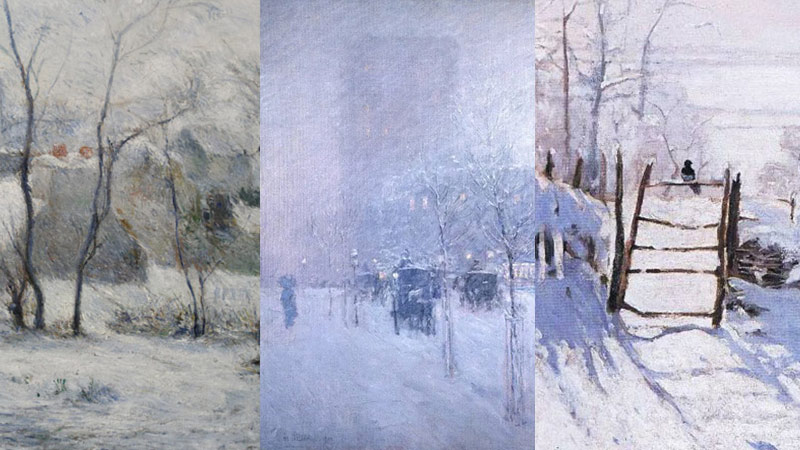
Winter has long captivated artists, inspiring them to capture its serene beauty on canvas. The stark whiteness of snow and the soft, muted light create a unique atmosphere that has fascinated painters from the Middle Ages to the modern era.
While winter was often a backdrop in earlier artworks, it emerged as a prominent theme during the Impressionist movement, showcasing the intricate play of light and shadow on snow-covered landscapes.
In this article, we’ll explore ten of the most famous winter paintings that embody the spirit of the season. From the cozy warmth of a fireside to the breathtaking tranquility of a snowy scene, these masterpieces reveal how artists have interpreted winter’s charm throughout history.
Each painting tells its own story, inviting viewers to experience the magic of winter through the eyes of some of the greatest artists.
1. The Hunters in the Snow – Pieter Bruegel the Elder

Pieter Bruegel the Elder painted “The Hunters in the Snow” in 1565, marking a significant moment in winter art history.
This iconic work depicts hunters returning from their expedition, emphasizing the harshness of the season. The serene village, blanketed in snow, showcases Bruegel’s skill in capturing detailed peasant life.
The landscape features people engaging in winter activities, like ice skating, illustrating the communal spirit of the season.
This painting is part of a series representing the months, making it one of the earliest dedicated winter scenes in Western art.
2. The Sea of Ice – Caspar David Friedrich
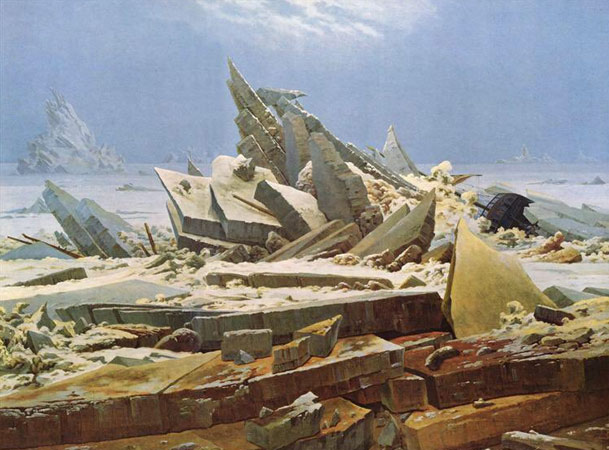
Caspar David Friedrich’s “The Sea of Ice” (1823-1824) stands out as a powerful symbol of Romanticism in winter paintings.
It depicts a dramatic shipwreck amidst a chaotic ice field, showcasing the raw power of nature. The monolithic ice formations resemble a mausoleum, conveying a somber mood and a sense of isolation.
This artwork was initially overlooked, reflecting the struggles of human existence against the forces of nature.
Friedrich’s fascination with the Arctic, inspired by contemporary expeditions, adds depth to this striking representation of winter’s harsh beauty.
3. The Magpie – Claude Monet
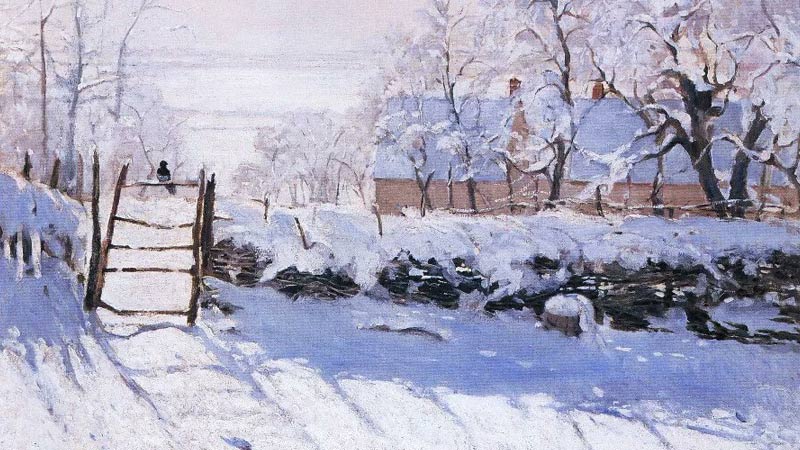
“The Magpie,” painted by Claude Monet in the winter of 1868-1869, showcases a serene Argenteuil landscape blanketed in snow.
The artwork features a solitary magpie perched atop a fence post, skillfully rendered with Monet’s signature Impressionist style.
Utilizing an ethereal palette of blues, purples, and whites, Monet captures the tranquil beauty of winter while emphasizing the dynamic relationship between light and shadow in the snowy surroundings.
This piece has become an iconic representation of 19th-century French landscape painting, reflecting Monet’s ability to evoke emotion and stillness through his brushwork.
4. The Fox Hunt – Winslow Homer
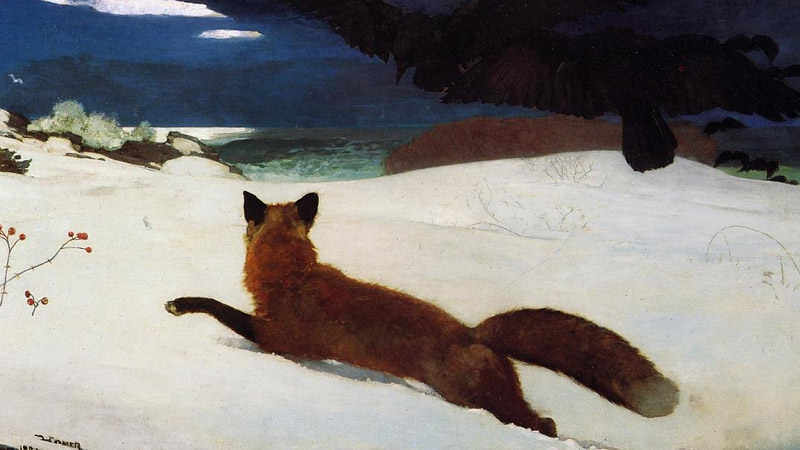
“The Fox Hunt,” painted by Winslow Homer in 1893, stands as his largest single work. This oil on canvas portrays a lively winter scene at Prouts Neck, Maine.
Homer vividly captures the thrill of the hunt, showcasing a group of hunters set against a pristine snowy backdrop. The frozen landscape enhances the excitement of the chase, while the expressive brushstrokes convey motion and energy.
Homer’s keen attention to detail reflects the stark beauty of winter, further solidifying this piece as a prominent example of American landscape painting in the winter genre.
5. Skaters in the Bois de Boulogne – Pierre-Auguste Renoir
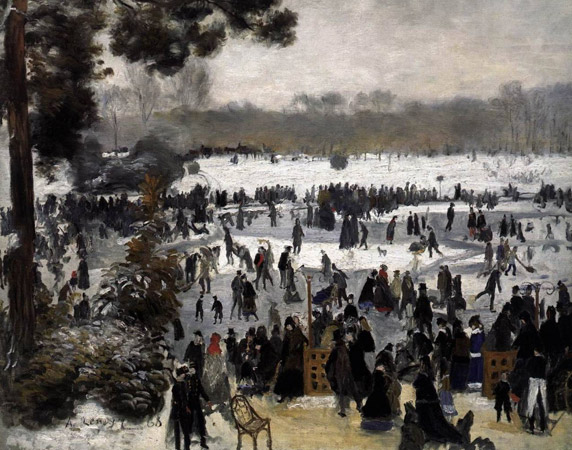
Renoir’s Skaters in the Bois de Boulogne stands out among his works created in 1868. This winter landscape captures Parisians enjoying their favorite pastime of ice skating in the public park of Bois de Boulogne.
Renoir skillfully uses shades of grey and white, departing from his typical vibrant pastels. The contrast of the figures dressed in black against the snow creates a striking visual impact.
This painting reflects Renoir’s ability to embrace the joy of winter, despite his aversion to cold weather, making it a rare gem in his portfolio.
6. Garden Under Snow – Paul Gauguin
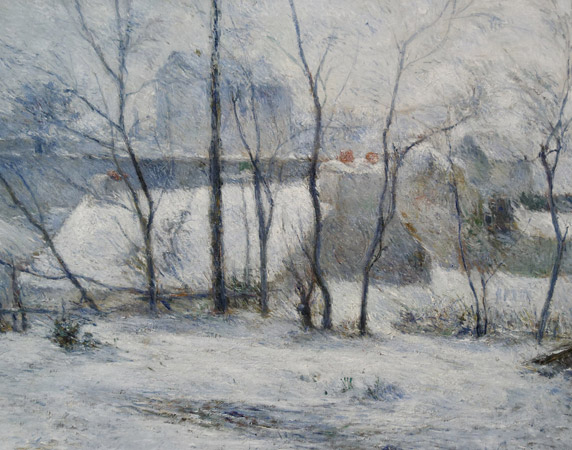
Gauguin’s “Garden Under Snow,” painted in 1894, offers a striking landscape adorned in white. The scene presents a small village nestled in a valley, blanketed by a soft layer of snow.
Warm-colored buildings contrast beautifully against the deep blues and whites of the winter landscape. A solitary figure, likely Gauguin himself, walks past a church, emphasizing his profound connection to nature.
This work exemplifies his Symbolist style, capturing the serene beauty and mystical qualities of winter, and stands out for its rich color palette and emotive depth.
7. Late Afternoon, New York, Winter, 1900 – Frederick Childe Hassam
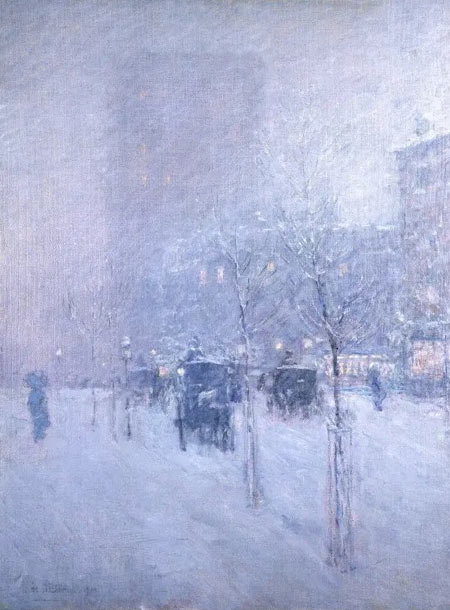
Hassam’s “Late Afternoon, New York, Winter” captures the essence of a snow-covered New York City in 1900.
He utilizes rapid brushstrokes to depict the unique light reflecting off the urban landscape. The painting features elegant brownstone buildings draped in soft snow, creating a tranquil winter atmosphere.
Scenes of everyday life unfold with figures strolling through the snowy streets, showcasing Hassam’s ability to combine impressionism with a modern cityscape.
This work stands as a vivid representation of Hassam’s dedication to capturing contemporary life amid the beauty of winter.
8. La Diligence in the Snow – Gustave Courbet
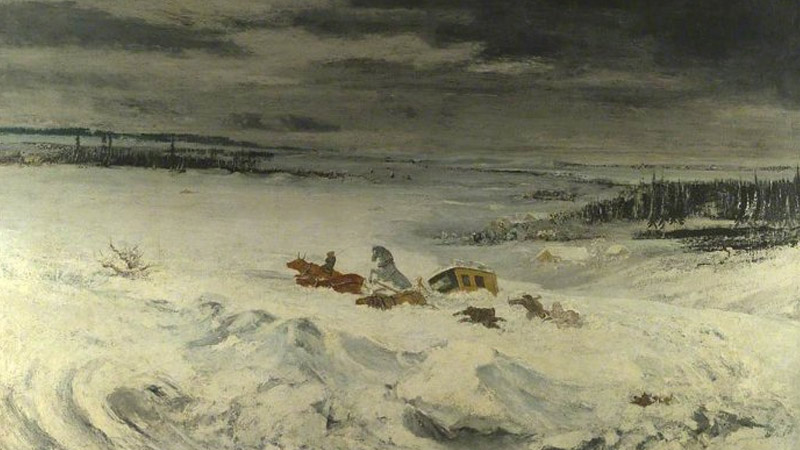
Gustave Courbet’s “La Diligence in the Snow,” painted in 1866, vividly depicts a snow-covered landscape with a horse-drawn carriage traveling through the wintry scene.
Courbet’s attention to detail brings the realism of winter travel to life, showcasing the challenges and beauty of the season.
The stark contrast between the white snow and the earthy tones of the carriage emphasizes the struggle against nature.
Through his masterful brushwork, Courbet captures both the serenity and harshness of winter, making this painting a striking representation of 19th-century French art.
9. Snow at Louveciennes, 1878 – Alfred Sisley
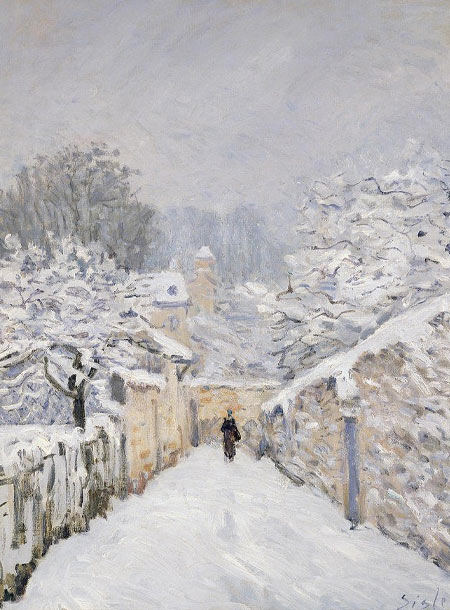
Alfred Sisley’s “Snow at Louveciennes” captures a tranquil winter scene depicting a snow-covered road disappearing into the distance.
The painting features a single figure, emphasizing solitude amidst the serene landscape. Sisley expertly uses soft hues and varying shades to illustrate the subtle changes in light on the snow.
His love for winter landscapes shines through, showcasing both the beauty and melancholy of winter. This piece highlights the Impressionist commitment to capturing everyday moments, transforming a simple subject into a captivating work of art.
10. Landscape with Snow – Vincent van Gogh
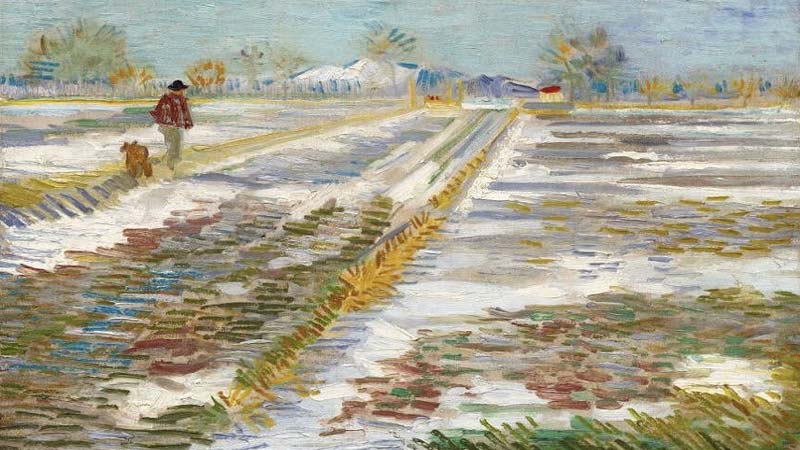
Vincent van Gogh’s “Landscape with Snow,” completed in 1888, surprises many due to its rarity within his winter-themed repertoire.
The painting showcases a winter landscape as snow begins to melt, revealing hints of green and brown beneath.
Van Gogh employs vibrant colors, giving the scene an uplifting atmosphere with a blue sky suggesting approaching sunshine.
This work reflects his departure from the darker tones often associated with winter, capturing a moment where nature transitions, brimming with hope and renewal. It’s a striking contrast to more typical depictions of winter gloom.






